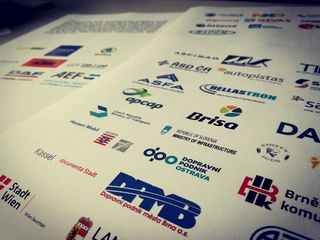C-ITS deployment takes off, increasing road safety and decreasing congestion
Cooperative Intelligent Transport Systems (C-ITS) include wireless technology for connected vehicles, road infrastructure, pedestrians, bicyclists, motorcyclists, agriculture machinery and railway equipment that share and use information for coordinating their actions in public spaces. Standardised C-ITS services are key to addressing increased road traffic congestion and to reduce road fatalities, for which the European Union has set challenging reduction targets. More specifically, first implementers from vehicle manufacturers, road authorities and road operators are addressing these issues on a large-scale with the provision of Day-1 C-ITS services (e.g., stationary vehicle warning, emergency electronic brake light, road works warning). The implementation is based on WiFi (ITS-G5) technology to improve road safety and reduce traffic congestion for European citizens as of today.
The effectiveness of C-ITS is optimised by combining the ITS-G5 and standard cellular networks as part of a hybrid communication approach, which will reach more road users and larger portions of the European road infrastructure. This is why European C-ITS stakeholders such as road authorities, road operators, vehicle manufacturers, ICT industry and the agriculture machinery and railway equipment sector are jointly committed to C-ITS, that is based on available and proven interoperable harmonized specifications, standards and technologies. There is large-scale deployment of C-ITS across Europe and we will continue to deploy C-ITS using these proven wireless communication technologies, ensuring harmonization and interoperability of C-ITS services and applications. This deployment approach is the baseline for wide European roll-out and the further development of C-ITS services.
Future technical innovations in C-ITS are welcomed and should be combined with existing, proven technologies by complementing the defined hybrid communication approach. The mature ad-hoc wireless technology ITS-G5 (no network coverage or subscriptions required, particularly in the rural areas) and cellular networks (3G/4G) may therefore be supported by future 5G developments, which will provide Europe with further technology delivery options. This technology neutral approach will support the two “Cs” in Cooperative, Connected, and Automated Mobility (CCAM), which is the highest priority in Europe. CCAM will enhance mobility and more specifically improve road safety and efficiency within Europe.
Supporters of the statement are committed to place Europe at the forefront of development and deployment of CCAM relying on a strong regulatory framework. Deployment of C-ITS and ITS-G5 is progressing and therefore the first important step towards truly connected and automated driving has been taken!
Download the statement as pdf here.
Supporters (at the time of release of this statement):
AEF, APCAP, ASFA, ASFINAG, Autopistas, AŽD Praha (Czech producer and supplier of control and signaling technologies), Brisa, Brno City owned company for street network maintenance and operation (BKOM), Brno City Public Transport Operator (DPMB), CERTH‐HIT, Car2Car Communication consortium, City of Vienna, City of Kassel, City of Graz, CohdaWireless, Comune di Verona, Ministry of Transport of the Czech Republic (MDCR), Czech Technical University in Prague, DAF, DARS, Dynniq, GEVAS, Groupe Renault, HELLASTRON, ICCS, ITS mobility, INTENS Corporation, KAPSCH, KTM, Magyor Közút, Land Salzburg, National railway infrastructure manager in the Czech Republic (SŽDC), NXP, NeoGLS, O2 Czech Republic a.s., Ostrava City Public Transport Operator (DPO), State of Hesse, Pilsen City Public Transport Operator (PMDP), RADOM Company, Road and Motorway Directorate of the Czech Republic (ŘSD), Republic of Slovenia Ministry of Infrastructure, SANEF, SCANIA, SEOPAN, ŠKODA Auto, Swarco, T‐Mobile Czech Republic a.s., Transport Infrastructure Ireland, Volkswagen Group, Volvo Group.


